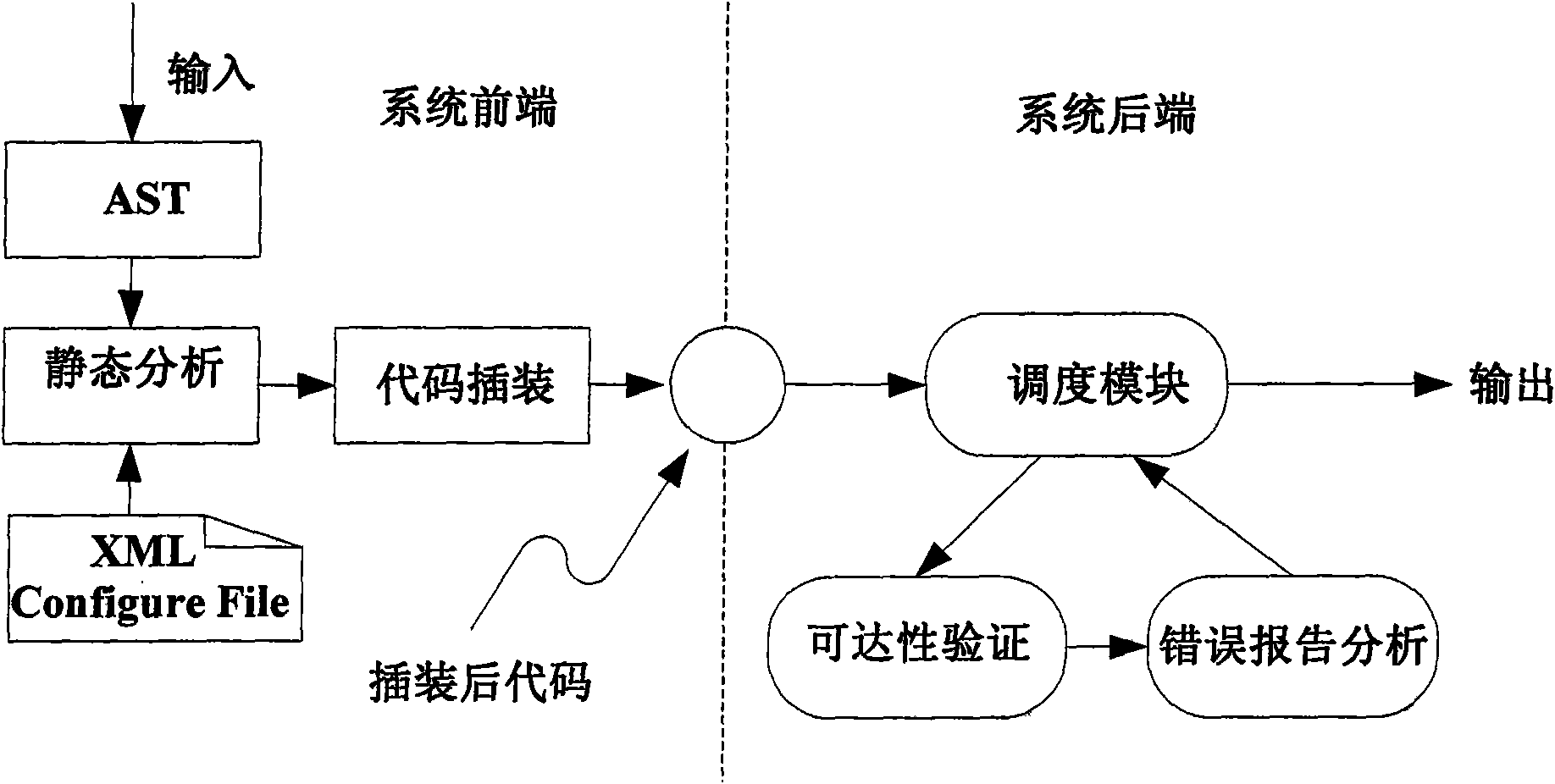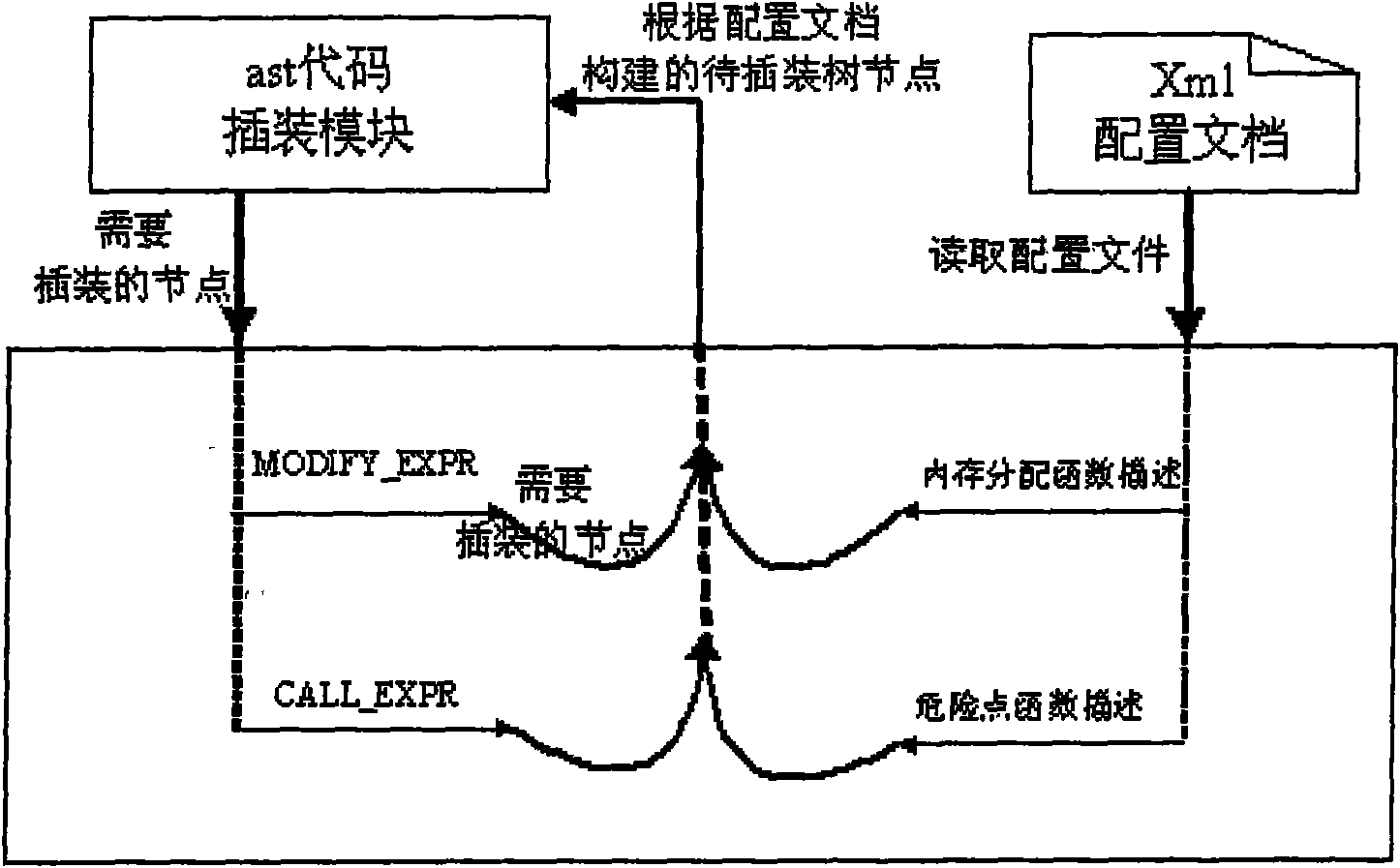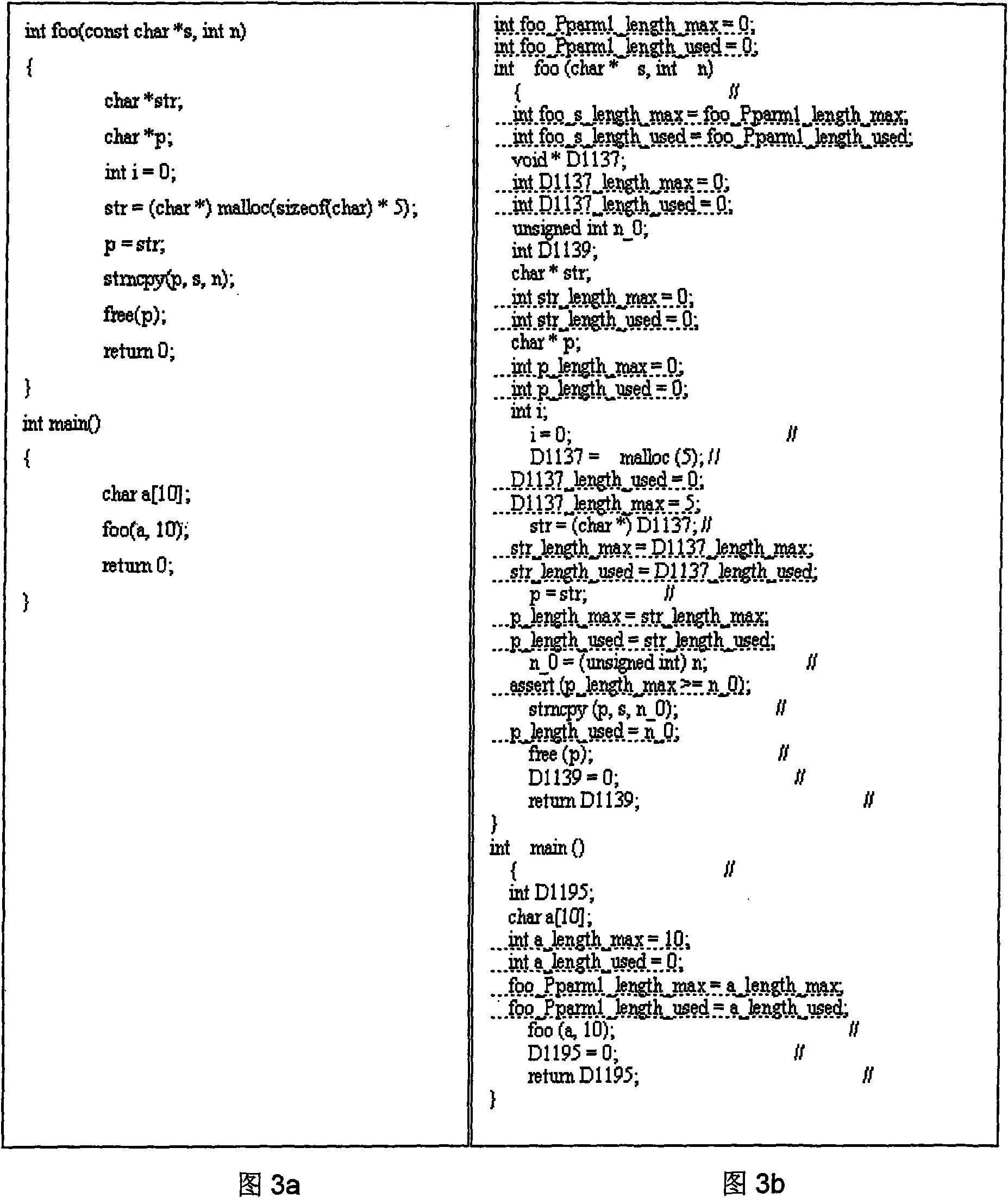Method for detecting code security hole based on constraint analysis and model checking
A model detection and vulnerability detection technology, applied in the static detection field of source code vulnerability detection, can solve problems such as inability to directly detect program vulnerabilities, high false positive rate, inability to detect more complex buffer operation security, etc.
- Summary
- Abstract
- Description
- Claims
- Application Information
AI Technical Summary
Problems solved by technology
Method used
Image
Examples
Embodiment Construction
[0019] The present invention first traces the change of variable information in the program through static analysis, adds attribute information to the buffer and records the scope of the buffer, and inserts corresponding attribute generation, attribute Transfer and attribute verification statement information, build a buffer attribute constraint model, and then use Blast to verify whether the dangerous points in the attribute model are reachable, and transform the problem of security vulnerability detection into the problem of determining the accessibility of a certain location in the program. This ensures accurate detection of source code vulnerabilities. Structure diagram such as figure 1 .
[0020] 1. Constraint analysis
[0021] First abstract the buffer as an integer value pair containing the maximum length of the buffer and the used length, and call it the attribute of the corresponding buffer, and abstract various operations on the buffer (including pointer assignment...
PUM
 Login to View More
Login to View More Abstract
Description
Claims
Application Information
 Login to View More
Login to View More - R&D
- Intellectual Property
- Life Sciences
- Materials
- Tech Scout
- Unparalleled Data Quality
- Higher Quality Content
- 60% Fewer Hallucinations
Browse by: Latest US Patents, China's latest patents, Technical Efficacy Thesaurus, Application Domain, Technology Topic, Popular Technical Reports.
© 2025 PatSnap. All rights reserved.Legal|Privacy policy|Modern Slavery Act Transparency Statement|Sitemap|About US| Contact US: help@patsnap.com



